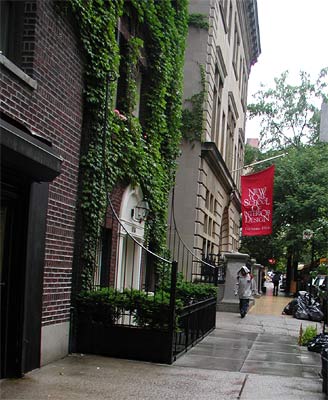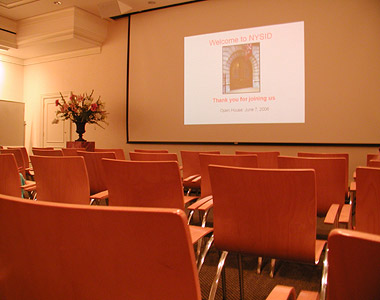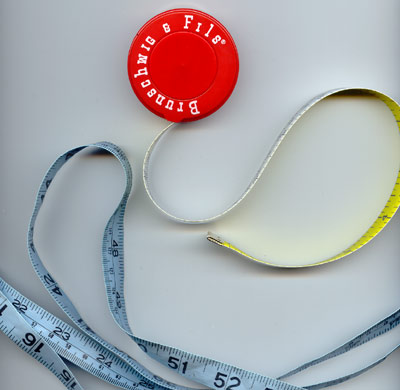|
click here to maximize your minimalism!
click here
click here
click here

click here to view my favorites from the archives. gee















are you a fonts enthusiast? a typophile?
read more

find the beauty on your daily walk! take time to notice the details of your landscape.
read more

there is nothing like seeing a great handbag in action.
read more

plastics are our future. how can you resist plastic? it is so shiny and pleasing. I have a penchant for plastics.
read more

chronicling my quest for the one true
Greek Cup
read more

have you ever noticed the similarity between nyc fire call boxes and benevolent Kannon, goddess of mercy?
read more

every design, fashion and art magazine I read lately features some important directional artist making big contributions to their genre. and where do they live? brooklyn!
read more

who says there are no more 'new ideas' in art and design? the newness is in the juxtaposition.
read more

this is how I really get things done. with my little green co-worker/task-master.
read more



my
clothing & accessories design
east-meets-west minimalism
my site
elaineperlov.com
the look
dressy utilitarian
my concept
useful, economical, modular pieces that can be mix-matched in numerous
ways (because why can't fashion be useful and lasting? I think
it can!) So I say Maximize your Minimalism!
Satin Karate Belt featured in Dec 06 Real Simple

Voted Best Designer 2006 Style Bakery
'On the Rise'
Awards

Daily Buss Feature

Luckymag.com Feature

in the blog press
midtown lunch
brownstoner
racked
coutorture
the girl who ate everything
coutorture
queens eats
(into) the fray
stylefinds
funky finds
style document
stylefinds
gowanus lounge
far too cute
modish
ethereal bliss
couture in the city
independent luxe
decor 8
funky finds
urban socialite
lady licorice
high fashion girl
more press...
inspiration
furniture (especially chairs from the 50s and 60s), uniforms, repeating patterns, menswear, Oscar Niemeyer,
traditional Japanese architecture, the Rimpa School and Ogata Korin's 8-Point Bridge, Matisse, bromeliads,
succulents and other waxy flora
particular loves
bamboo, coral, moss, woodgrain, silhouettes & other cut-outs, plastic,
low-resolution images, the photo copier, off-registration prints, Max
Ernst's Lunar Asparagus, NYC fire call boxes that look like Kannon, Fauvist color sense, the Noguchi Museum,
pretty much all of Abstract Expressionism
magazines of current
interest
Domino, Elle Decor (British), ARTnews, Art in America, Wallpaper
favorite heel style
the wedge, but a sleek modern interpretation
second favorite
the stiletto
current shoe obsession
alas, the sneaker. (because I live in nyc and walk a ton!) but not too
sneakery of a sneaker. more of a sneaker disguised as a shoe, like a mary
jane style or a high-tech looking black one with a metallic accent. how
about Royal Elastics? I must go try some on. I really like the non-sneakeryness
of their styles.



















|
what is interior design?
I was really curious to find out just what an interior designer does. That is what brought me to the New York School of Interior Design open house yesterday. All the talks about the field and the school were so interesting. I took notes. Here is what I found out. Much like a fashion designer, an interior designer is a jack-of-all trades. An interior designer should have a command of business, marketing, psychology (to work one-on-one with clients, believe me you need a knowledge of psychology!), but more specifically, 3-D design, 3-D drawing to do "elevations" and "vignette drawings" for the client, have a working knowledge of color theory and materials such as wall finishes and fabrics and how different lighting impacts those fabrics, must be able to work with contractors down to discussing if a " piano hinge" vs. a " European hinge" would be more suitable to hang the door, must be able to read and generate floor plans (using CAD) and have a knowledge of the city's building codes in working with the architect on the project, facility in French and a knowledge of art history as well as styles of interior design throughout the historical periods. I am sure there is more. This is some of what the talks touched on. So you are maybe asking yourself, so what, do I want to leave fashion design behind and become an interior designer? No way. I love doing what I do. But I wouldn't mind adding some skills and consulting in some form. I do love transforming spaces. I am already great with fabrics and can calculate yardage like nobody's business, have the business, marketing and psychology abilities, have 5 years of French under my belt, a museum background, lots of art history, and the ace-in-the-hole, Japanese art history (I saw many final projects yesterday with Japanese art references), plus I can transform flat pattern drafting into 3-D modelling, have a strong interest in architecture and surfaces, and I happened to be carrying my own tape measure yesterday for a studio redesign project I am doing for myself. Plus I can bring my own unique designs to a project, including custom window treatments, pillow designs, and other custom fabric solutions to soften a space. If there are any interior designers out there reading, please comment on what you do in your career on a day-to-day basis, including your favorite creative aspect of what you do. How closely do you work with architects? Many thanks!  The approach to the school on 70th St. Very nice real estate. They have a newly relandscaped roofdeck with views of Central Park for the students! Upper East Side living. Very nicel. I stood under the awning of a nearby fancy apartment building to get this shot in the pouring down rain. The approach to the school on 70th St. Very nice real estate. They have a newly relandscaped roofdeck with views of Central Park for the students! Upper East Side living. Very nicel. I stood under the awning of a nearby fancy apartment building to get this shot in the pouring down rain.  The lecture hall. I got there early. I liked the design of the chairs. The lecture hall. I got there early. I liked the design of the chairs.
 They gave us free tape measures! (from Brunschwig & Fils) But I already had mine with me (the blue one). They gave us free tape measures! (from Brunschwig & Fils) But I already had mine with me (the blue one).Labels: interior design
:::
|
|
 The approach to the school on 70th St. Very nice real estate. They have a newly relandscaped roofdeck with views of Central Park for the students! Upper East Side living. Very nicel. I stood under the awning of a nearby fancy apartment building to get this shot in the pouring down rain.
The approach to the school on 70th St. Very nice real estate. They have a newly relandscaped roofdeck with views of Central Park for the students! Upper East Side living. Very nicel. I stood under the awning of a nearby fancy apartment building to get this shot in the pouring down rain.  They gave us free tape measures! (from Brunschwig & Fils) But I already had mine with me (the blue one).
They gave us free tape measures! (from Brunschwig & Fils) But I already had mine with me (the blue one).

























6 Comments:
Thanks Elaine, great blog. As an interior design major, people don't even have to say anything, I see "the look" when they ask me what I'm majoring in. They think it is an easy course of study and a fluff job! Hardly!
Thanks so much for commenting on this post! More comments welcome!! Would love to know more.
great post elaine, and i applaud your interest. honestly, design is a very hard profession when you dig into it - i think the best show to watch on television that really shows the guts of design is that canadian show on hgtv called 'design inc'. it's shot in reality-show style and the designers really have a command on what they're doing, but face many screw ups and conflicts.
you are spot on when you mention the psychology of it all. in fact, design schools need to add psych courses to their curriculum because it's a major part of being a designer. i mean major. creating a space in someones home is a very intimate experience. thank goodness i gorged myself in psych coursework years back. it came in handy when i decided to go back to school for interior design.
having learned CAD and loving time at the drafting table, i have about 8 years of experience in space planning. i'm still learning, but i can't say how important it is to learn elevations, flow, gosh i could comment on this alone for 100 paragraphs. it's just important, that's all. i can't reinforce the importance of possessing solid techinical and artistic abilities. it's not just picking pretty things to dot around a space. there's so much more to it.
i'm not sure if the ny school of i.d. actually explained the various career paths that one can go down once they've attained a design education, however the way my instructors taught me was that there's hospitality design (restaurants, night clubs, cafes, etc.), government/corporate design (which is my area of expertise), healthcase design (hospitals, nursing homes, etc.), residential, and retail space design (showrooms, stores, etc.). You can work for a firm, for a corporation, or for yourself.
There's also another avenue of i.d. to take, the less technical one. It's called 'staging'. That's where one specializes in tweaking or editing space, or creating a room that will never be lived in. Model homes, for instance. Or, if someone is selling a home, they'd pay you a set fee to come in and tell them what they need to do to sell it and this would involve your help - you'd remove pictures of the family and personal belongings, work on configuring their floor plan to make the space appear larger, perhaps consult with them on projects tey need to take on - replacing the kitchen floor, painting the walls in neutral tones, removing the rug and polishing the wood floor that lies beneath. this doesn't require a heavy duty design education, but it does require that one is very creative, good with people, savvy when it comes to property and what sells, understand color theory, knows current trends (for instance, popular accents or colors that would increase the value of the home), etc.
then, there's another avenue of design that is also lighter than a 4-year degree program, and that's simple decorating. Well, I say simple but being a good decorator is vital. Decorator doesn't sound very fancy, so some dress up the term by calling themselves an interior stylist. i prefer hearing that phrase myself because i think of a decorator as one of these soccer mom home services, complete with vinyl blinds and puffy leather sofas. an interior stylist doesn't need to educate themselves in building codes or technical drawing, but it's helpful if they do in case the owner hires an architect and you find yourself working with an architect on a project - it's nice to actually be able to understand them (tech speak). otherwise, interior stylists are just that - they have this way of styling a space - they have that special knack that others want to tap into. many consult as stylists and love it. i know nate berkus isn't a designer, he didn't go to design school, but he is a stylist and look at his results - he's not bad!
as far as codes go, i'm still learning those. very tricky stuff. regional building and fire codes alone take forever to learn, then there are municipal codes and various other jurisdictional regulations + guidelines to consider. big point of study right now in i.d. is designing for the elderly and the handicapped. that's tricky, you have to consider so much!
one more thing... if you are interested in a design education, try parsons. my friend in brooklyn is in the certificate program there and loves it. a lady in one of my design classes attended parsons at one point for her bfa and loved every moment of it. does ny school of design have a certificate program? i push people that already have degrees in a different disapline to look into certificates - they take 2-3 years and give you most of what you need to succeed. the rest you really learn ON THE JOB.
best,
holly
Thank you so much Holly!! This is exactly the kind of meaty comment I was looking for. Very very interesting. Thank you for taking the time to write this.
you're welcome elaine. meaty is right, it took up half a page... but i wanted to at least touch on some things that i understand about design. there are many misconceptions, and television home shows don't help clear them up at all!
Holly
Hi Elaine,
I just came across your blog. It's very fun and interesting. I'm as fascinated by fashion design as you are by interior design. So many of the design disciplines cross boundaries and if you are good at one you will be good at them all. Yes to everything Holly said above. Interior designers really are part architect, part graphic designer, part illustrator, part business person, and part therapist.
I will begin my senior year in interior design this fall and am currently on an internship with an architectural firm. I am going into commercial design and the work we do would best be described as interior architecture. Ideally the designer is part of a project team made up of architects and lanscape architects, and is responsible for anything inside the building, from spaceplanning and a large portion of the interior construction documents, to the interior finishes. We have to make a space functional before we can make it beautiful.
In addition to building codes, ADA requirements, etc. a significant development in commercial design is sustainability. The US Green Building Council has established the LEED (Leadership in Energy and Environmental Design) certification program. Many government buildings are now required to be LEED certified. That requires a building to be energy and water efficient among many other things. For designers that means our interiors need to use materials that are recycled and able to be recycled, are low emission (paint, carpet, fabrics, woods can't contain chemicals like formaldyhyde that offgass into the air and can make people sick), and use regional materials to support the local economy and cut down on pollution caused by transportation. We have to work very closely with architects at every step, and they have to work closely with us. Air quality, lighting, energy efficiency are all part of the equation. This is another very technical area of design that many people don't consider, especially while watching HGTV.
Once again, you have a very fun blog. Fashion design is something I'd love to learn more about.
Another Holly
Post a Comment
<< Home